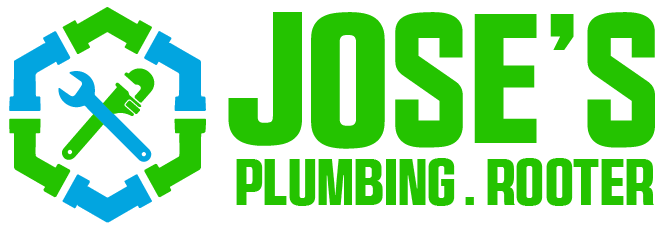
Tree Root Intrusion Sewer Solutions: Restore Harmony to Your Yard
No one wants to deal with the chaos of tree root intrusion sewer systems, yet it remains a common issue. One moment, you’re enjoying your lush yard, and the next, you’re facing unexplained plumbing concerns. Trees that provide shade and beauty may also damage your underground sewer system. These hidden threats can disrupt your peace of mind and cause costly repairs. Fortunately, effective strategies exist to restore harmony between your garden and plumbing system. With the right solutions, you can protect your trees and your pipes.
Understanding Tree Root Intrusion in Sewer Systems
Tree roots are naturally drawn to water and nutrients, making sewer lines an easy target. Small cracks and joints allow roots to infiltrate and expand. Over time, this intrusion weakens pipes, causing collapse or misalignment. The process begins with minor leaks in older pipes. Moisture in the soil attracts roots, which then enter through tiny gaps. As months pass, roots enlarge the cracks, eventually creating major sewer damage.
Roots sense moisture escaping from small pipe fissures.
They grow toward the source of water and nutrients.
Even small openings provide access points for intrusion.
Signs and Symptoms of Tree Root Intrusion
Early signs often seem minor but should not be ignored. Slower drains or gurgling sounds may indicate root issues. Multiple fixture backups suggest deeper sewer blockages. You may also notice foul odors from drains or soggy patches in your yard. Unusually lush vegetation along sewer paths is another indicator. In advanced cases, you might see ground depressions or small sinkholes.
Slower-than-normal drainage in sinks and tubs.
Gurgling noises from toilets or floor drains.
Unpleasant smells or sudden wet spots in the yard.
Risks and Consequences of Ignoring the Issue
Neglecting tree root intrusion sewer problems has serious consequences. Blockages may cause raw sewage backups inside your home. These unsanitary conditions pose health risks to families and pets. Structurally, roots widen cracks and separate pipe joints, leading to catastrophic pipe failure. Ignoring the issue can also escalate costs due to excavation, driveway repaving, and soil remediation. In many cases, early intervention saves thousands of dollars.
Health hazards from sewage exposure.
Increased structural damage over time.
Expensive emergency repairs and property damage.
Non-Invasive Solutions for Tree Root Intrusion
Modern technology offers non-invasive methods to manage intrusion effectively. Trenchless pipe lining installs a new surface inside damaged pipes, sealing cracks and blocking further entry. Hydro jetting uses pressurized water to clear roots and debris without harming landscaping. When performed regularly, these techniques extend pipe life significantly. To explore these solutions, consider contacting experts in sewer line repair.
Root Removal Techniques: Which Ones to Avoid
Some methods seem appealing but may worsen the problem. Mechanical augers can slice roots, leaving jagged pipe edges open to regrowth. Chemical root killers temporarily slow growth but can harm the environment. These chemicals may leach into groundwater and damage surrounding plants. Avoiding these methods helps protect your sewer and your yard.
Implementing Preventative Measures
Prevention is always better than emergency repair. Mapping sewer lines and keeping large trees at least 20 feet away is wise. Choose shrubs or grasses instead of water-seeking trees near pipes. Scheduling inspections every one to two years with CCTV cameras helps detect problems early. Installing physical or chemical root barriers adds another layer of protection. Homeowners should also consider professional help for sewer pipe installation.
Professional Help: When to Call a Plumber or Arborist
If backups, odors, or yard wet spots persist, it’s time for experts. A licensed plumber can perform a camera inspection to find the exact intrusion site. Arborists evaluate tree health and root structure, suggesting safe pruning techniques. Collaboration between both specialists ensures pipes are repaired and trees remain healthy. For more complex cases, request assistance from specialists in sewer pipe replacement.
Eco-Friendly Approaches to Managing Tree Root Intrusion
Environmentally friendly methods help balance tree care with sewer protection. Biological treatments introduce microbes that consume fine root hairs without harming trees. Phased pruning, combined with mulching, guides roots deeper instead of sideways. These sustainable approaches maintain healthy yards while reducing sewer risks. Choosing eco-friendly solutions also protects local ecosystems.
DIY Tips for Maintaining Healthy Trees without Endangering Your Sewer System
Simple habits prevent intrusion while supporting tree health. Water trees deeply but less often, pushing roots deeper into the soil. Aerating around tree bases encourages healthy growth and proper direction. When installing new pipes, select materials like HDPE or PVC. These pipes resist root intrusion better than older materials. To protect new installations, add gravel around pipes as a root deterrent.
FAQs About Tree Root Intrusion Sewer Problems
What causes tree root intrusion sewer issues?
Roots naturally seek water and nutrients. Cracks in sewer lines release moisture, attracting roots that grow into the pipes.
How do I know if tree roots are in my sewer?
Warning signs include slow drains, foul odors, gurgling toilets, or wet spots in your yard above sewer lines.
Can tree root intrusion sewer problems damage my home?
Yes, roots can block pipes, cause sewage backups, and lead to costly structural damage inside and outside the home.
What solutions are available for tree root intrusion sewer issues?
Non-invasive options like hydro jetting and pipe lining are effective. Routine inspections help prevent serious problems.
When should I call a professional for tree root intrusion sewer concerns?
If you notice recurring backups or odors, contact a plumber for inspection. Arborists can also help manage tree health.
Maintaining Harmony Between Your Yard and Plumbing System
Maintaining balance requires proactive care and early detection. By combining non-invasive techniques, eco-friendly options, and preventative steps, you reduce risks. Professionals offer long-term solutions that protect both trees and pipes. For expert guidance, reach out through our contact page today. Safeguard your yard and sewer system while enjoying peace of mind.
Contact Us
Santa Clara, CA
24/7 Availability
We Accept Cash, Checks, Zelle, and Credit Cards




